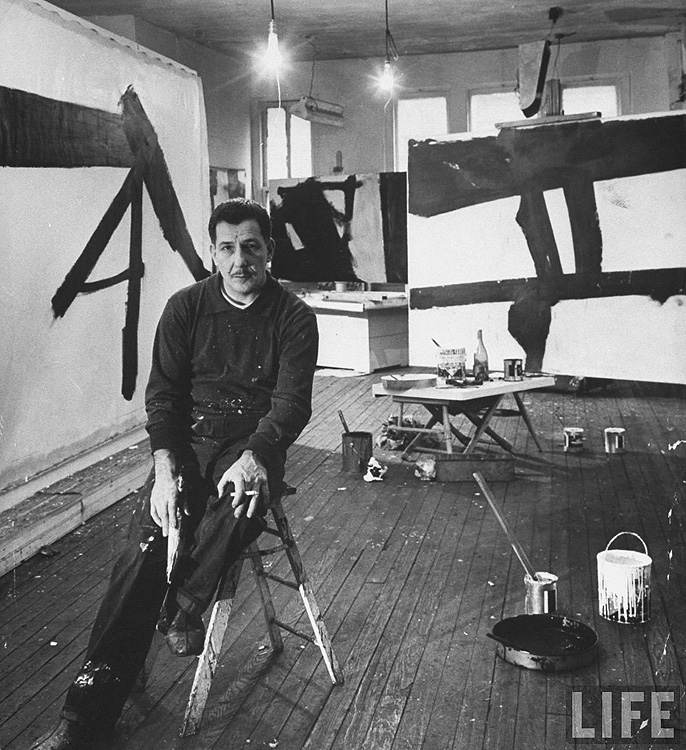
#FRANZ KLINE ABSTRACT PAINTINGS FULL#
Presumably, he felt the need to enlarge his scope after nearly a decade of concentrated focus, but before he was able to explore the full potential of color, he died of heart failure.

In the late 1950s he sometimes introduced sumptuous hues into his works, providing lyrical overtones to his art's aggressive tenor. Although primarily a painter, Franz Kline taught briefly at Black Mountain College. 11 in isolation for good reasons. In 1946, Franz Kline did his first abstract work and in 1949, became. Although many observers noted that his graphic images resemble overblown ideograms from Asian calligraphy, the artist always denied any connection. Until now I have deliberately focused on Painting No. Introduced to the public in 1950 at his first New York gallery show, his signature style won Kline a distinctive place among the best known action painters. While viewing slides of his own sketches, he suddenly grasped the abstract potential of greatly magnified line. Stimulated by the early development of abstract expressionism and particularly by his friendship with Willem de Kooning, in the late 1940s Kline pushed his images toward abstraction. 'Franz Kline: Art and the Structure of Identity,' March 18June 5, 1994, no. Through most of the 1940s he painted representational works, mostly figure studies and landscapes, which generally feature simplified massing of forms and distinct value contrasts. 'Abstract Expressionism, Works on Paper: Selections from The Metropolitan Museum of Art,' May 4September 12, 1993, extended to November 7, 1993, no.

Upon his return he settled permanently in New York. From 1925 he lived with his remarried mother in Lehighton until 1931, when he began four years of study at Boston University, followed in 1937–38 by additional training in London.
#FRANZ KLINE ABSTRACT PAINTINGS FREE#
Born in Wilkes-Barre, Franz Rowe Kline was educated after his father's death in 1917 at Philadelphia's Girard College, a residential free school for orphan boys.

A number of titles alluding to the region confirm the emotional and visual power it held for him. The bleakness and raw power of Kline's paintings suggest the eastern Pennsylvania industrial landscape that framed his early life. Decentralized compositions suggest space continuing beyond the edge of the canvas, creating with very different means the effect of boundlessness seen also in Jackson Pollock's all-over paintings. Swaths of black paint, sometimes applied with a housepainter's brush, are held in tension with intervening white areas, also vigorously brushed, so that his compositions avoid figure-ground relationships in favor of a flat surface. An abstract expressionist, he made his mark with large black-and-white paintings featuring architectonic forms constructed from broad, slashing lines.


 0 kommentar(er)
0 kommentar(er)
